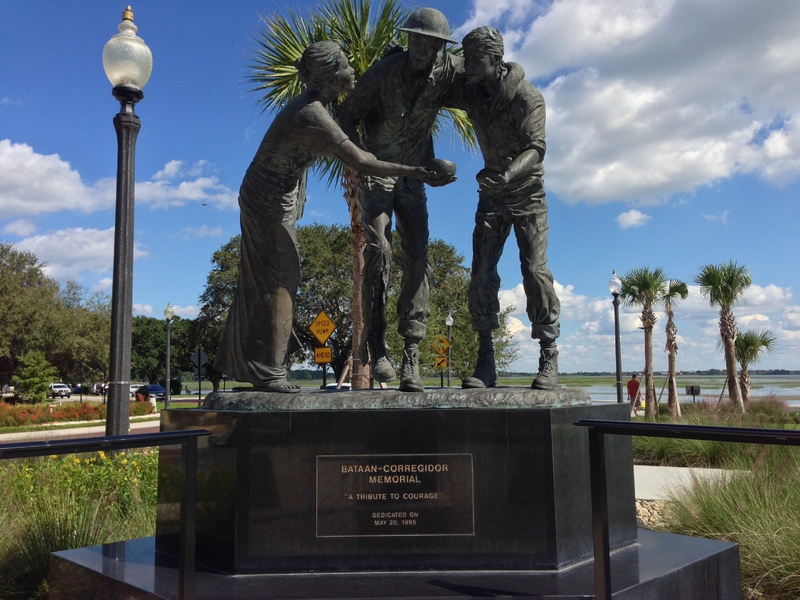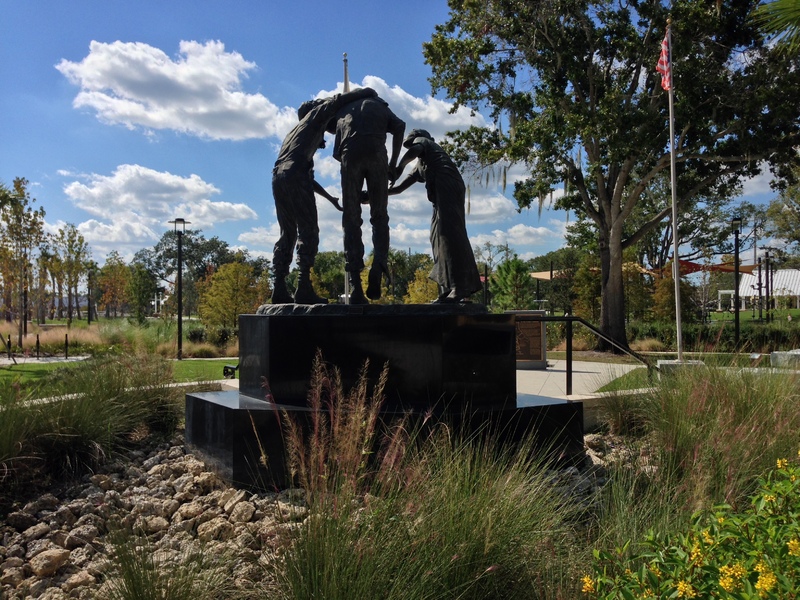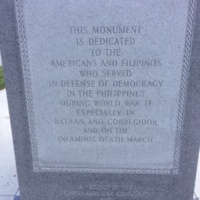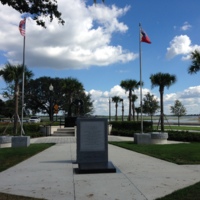Bataan-Corregidor Memorial
The Bataan Death March began on April 10, 1942 with the fall of Corregidor Island and the Bataan Peninsula to the Japanese. The Japanese assembled all the American and Filipino soldiers, a total of about 76,000 soldiers, and marched them approximately 65 miles north of the Bataan Peninsula to Camp O’Donnell.[3] The now infamous march to Camp O’Donnell became known as the Bataan Death March. It was labeled as such due to the Japanese harsh mistreatment of the prisoners; forcing them to march non-stop with no food, water, or rest and indiscriminately killing the prisoners.[4] By the end of the war approximately 4,000 Americans survived.[5]
By the 50th anniversary of the Bataan Death March, de Mesa and Herring realized that nothing had been done to memorialize the soldiers involved in the defense of Bataan and Corregidor; they then established the Bataan-Corregidor Memorial Foundation.[6] In a partnership with the City of Kissimmee and through private donations, the foundation broke ground on the site of the memorial in Kissimmee’s Lake Front Park on April 9, 1994, the 52nd anniversary of the fall of Bataan.[7] Sculpted by artist Sandra M. Storm, the memorial was completed and dedicated on May 20, 1995.
Since its completion, the Bataan-Corregidor Memorial has become the location of annual reunions of veterans who meet at the monument to honor and remember their sacrifice during World War II. Furthermore, as of April 9, 2003 the Bataan-Corregidor Memorial has become the centerpiece of the annual Filipino-American friendship day.[8]
The Bataan-Corregidor Memorial in Downtown Kissimmee's Lakefront Park shows that through friendship and strong will, one man can create a lasting memory for a community. Menandro M. de Mesa recognized the practically forgotten American memory of the Bataan Death March, and felt strongly that it must be remembered. Through friendship, fundraising, and sheer determination he was able to see through his dream of memorializing those who fought and lost their lives during the Bataan Death March in World War II.
The next time you are walking through your local park and come across a monument or memorial, I encourage you to take a moment and reflect upon its significance; both what it actually means to you, and what it means to the local community.
[1] Ellen Lansigan Elphick, "Richard Herring a True Friend of Filipinos," The Osceola News Gazette, 2006, accessed September 27, 2013, http://archive.osceolanewsgazette.com/popups/newswindow.php?id=10464&print=print.
[2] Ellen Lansigan Elphick, "Florida County Celebrates Fil-Am Day," The Philippine Daily Inquirer, April 9, 2005, accessed September 27, 2013, http://news.google.com/newspapers?nid=2479&dat=20050409&id=CFg1AAAAIBAJ&sjid=iCUMAAAAIBAJ&pg=1329,35680483.
[3] "Bataan-Death March," National Museum of the US Air Force, last modified August 3, 2009, accessed on November 24, 2013. http://www.nationalmuseum.af.mil/factsheets/factsheet.asp?id=15183.
[4] Menandro M de Mesa, "Bataan-Corregidor: Never Forget," The Orlando Sentinel, April 8, 1994.
[6] Elphick, "Florida County Celebrates Fil-Am Day."
[7] Anthony Millican, "Memorial to Bataan’s Fall Finally Will Rise," The Orlando Sentinel, April 9, 1994.
[8] Elphick, "Florida County Celebrates Fil-Am Day."




